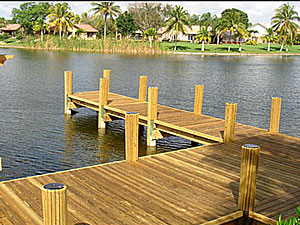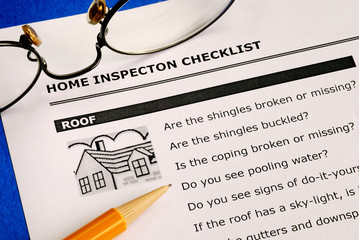The Dock allows you to perform internal commands without having to minimize a window. For instance, when iTunes is open, you can use the Dock to skip songs or stop playing them.
Big dock projects may require heavy machinery like excavators or piledrivers, which aren’t cheap to rent. However, they’re often necessary to ensure a swift and successful installation. Click the Dock Installation to know more.

Whether you’re looking to build a new floating dock or are upgrading your current one, preparing for the project can go a long way in minimizing expenses and stress. This is true for any type of dock installation, including pilings, pipe, crib, or lift docks. Here are some important tips to keep in mind:
Location: The location of the dock is a major consideration that must take into account water depth, hazards, and access requirements. This will also affect the cost, as navigating through the water with construction equipment can be more expensive than working on land.
Once the location is determined, a survey of the area and the lakebed must be performed to ensure there are no obstacles that could interfere with building the dock. The area should be free of weeds, rocks, and organic growth to make sure the construction area is ready for the dock’s arrival.
If the dock will be constructed on or in the water, a proper anchoring system must be established to ensure that the dock stays in place in fluctuating weather conditions and wavy waters. Concrete block anchors fastened to the lakebed in a crisscross pattern or chains that are fastened to each corner of the dock can help it withstand strong winds and tumultuous water conditions.
The next step is to construct the frame of the dock using pressure-treated lumber or other deck material. After the frame is complete, marine-grade screws or bolts should be used to connect it together. It’s also a good idea to reinforce the corners of the frame with metal braces, which can improve the dock’s structural integrity.
When the frame is finished, the next step is to install the decking and other accessories. It’s important to choose quality materials that are durable and safe for use, as well as follow all local regulations regarding the size, placement, and use of the dock.
It’s also a good idea to plan ahead for future utilities by adding conduits to the dock in case you want to add things like lighting and water access in the future. This can help to save time and money in the long run, as it will reduce the need for costly repairs or rebuilds later on.
Make Sure You Have All the Tools You Need
The right tools are crucial for any construction project, and dock installation is no different. To avoid any unnecessary headaches, make sure that you have all of the necessary equipment before you start working. Having the right tools will not only help to ensure that your project goes smoothly, but it will also help you to complete the job more efficiently.
In addition to making sure that you have all of the right tools, it’s also important to be prepared for any potential problems that may arise during the construction process. This means having a plan for how you’re going to address any issues that come up and being ready to react quickly to them.
For example, if you’re building a dock in a location with fluctuating water levels, you may need to adjust the height of your dock periodically. If this is the case, it’s a good idea to have a tool that can measure water levels so you can keep your dock properly adjusted.
Another potential problem that can arise during a dock build is having to deal with muddy ground conditions. If this is the case, you’ll need to have a tool that can dig through the mud and create a solid foundation for your dock. Fortunately, there are several options available for dealing with this issue, including piling drivers and concrete footers.
Once you’ve gotten the site ready, it’s time to begin constructing your dock. You’ll need to install the pilings, which are the vertical supports that will hold up your dock. You can use a pile driver to drive the pilings into the ground or you can set them in concrete footers to provide more stability.
Once the pilings are in place, you’ll need to attach the decking boards to them. To do this, you’ll need to use a drill and a nail gun. If you’re unsure how to do this, it’s a good idea to call in a professional.
Make Sure You Have the Right Permits
Building a dock for your waterfront property can be an exciting prospect. However, the process can also come with its share of regulatory hurdles, ranging from permit requirements to environmental concerns. While navigating these issues can be frustrating, following the right tips can help you avoid them and ensure your project is successful.
First, determine whether your project will require a permit. Permit policies can vary from state to state, and can also be impacted by local zoning regulations, homeowner association rules, and other factors. To get a clear picture of the requirements, start by consulting with your state’s government agency.
Once you have determined if a permit is required, begin the application process. This can include providing a site plan and detailed engineering for your dock, along with a statement of the proposed structure’s use and location. Once you have the necessary documentation, submit your request and allow sufficient time for review and approval.
As your permit is processed, keep in mind that additional permits may be required for electrical work and boat lifts. In addition, if your dock will be constructed on rock-filled cribs, you will likely need to obtain a rockfill permit. You should also contact your county’s natural resource department for information about other requirements.
Finally, it is a good idea to consult with legal experts in the area of environmental law and riparian rights, especially if you have neighbors who are not happy about your plans. These professionals can provide advice on how to proceed with your case and ensure that all of the appropriate permissions have been obtained.
As you complete the construction of your dock, it is a good idea to number each standard assembly with a magic marker so that next year you can build it in exactly the same way. Also, if you are considering expansions to your dock in the future, now is a great time to pre-plan for things like conduits and power connections. This can save you a lot of time and headache later on.
Call the Experts
Dock installation demands precision, skill, and specialized knowledge. While the allure of DIY projects may beckon, the importance of expert services cannot be overstated. Professionals offer a unique blend of experience and specialized expertise that elevates the dock construction process, safeguarding quality and longevity.
In addition to their specialized knowledge, professional dock builders understand the environmental factors that influence construction. This holistic understanding allows for a greater degree of customization to support personal needs and preferences.
Dock builders also have access to materials that can resist the elements and deterioration caused by prolonged exposure. While this may seem like a minor detail, it is critical for the long-term functionality and value of your waterfront property. A well-constructed dock will demand less repair, saving property owners significant costs and labor-resources over time.
Additionally, professional dock services have an intimate understanding of local and state regulations that govern dock construction. These can include permit requirements, environmental protection guidelines, and water use laws that differ from location to location. Professionals can efficiently navigate this complex web of red tape, protecting the dock owner and avoiding costly legal complications down the road.
Finally, professional dock builders can help with the most critical aspect of any dock construction: the foundation piling network. The integrity of your entire dock structure depends on the strength and reliability of these key components. This is why it is so important to ensure the foundation pilings are crafted from strong, durable materials and properly installed.
Even the best-constructed docks can fall into disrepair if not properly maintained. Uneven pilings, cracking or rotting boards, and rusting fixtures are all signs that your dock may be in need of repairs. When these issues are left untreated, they can become safety hazards and lead to further damage or instability of the dock.

 Inspection Reports
Inspection Reports
